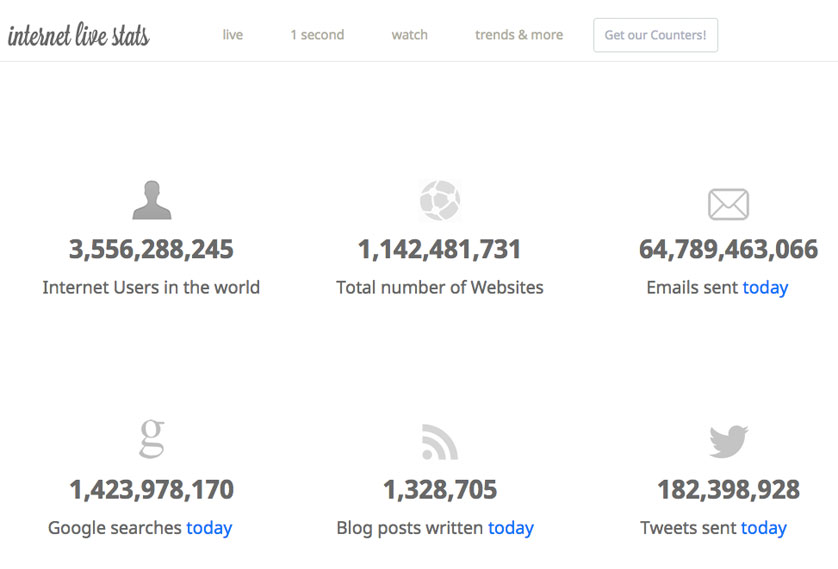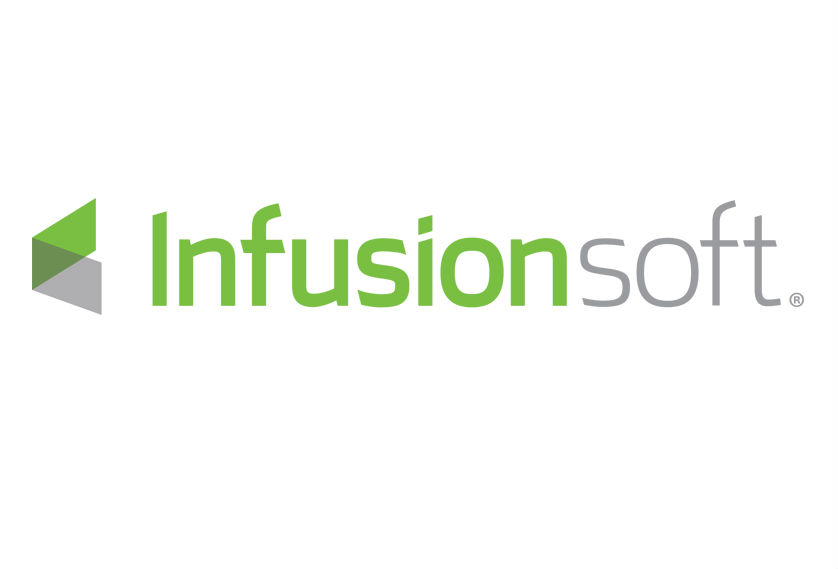There’s a direct correlation. If your website is crap, your marketing results will be crap. And you will struggle to get meaningful growth in your business.
Because IT support must be one of the most competitive sectors I have ever come across. A web search in even a small town reveals a large number of firms battling for new business.
If you have any doubt just how much activity there is online, check out www.internetlivestats.com. It’s a “live” counter of activity online. The figures are stunning.
In just one second:
- There is 41,612GB of internet traffic
- A stunning 2,560,372 emails are sent
- We do 58,508 Google searches
- And we watch 67,974 YouTube videos
So against this background, your website is your main and most important marketing tool.
Your website has a number of purposes. In priority order then…
Generate new leads: You need a system to generate and track leads into your business. You will then be able to see how your website is bringing new prospects through the door
Upsell existing clients: Educate existing clients about what they should be buying from you. Tell them about the benefits of your service plan before they pick up the phone to the helpdesk
Position your business correctly: If you’re focusing on the top spenders in your market, your website needs to reflect this. The quality of the website has a direct effect on the choices clients and prospects make
Essential source of information: Information about you, your business, your services, and your approach to IT support needs to be on your website.
Educate your audience: You can’t have too many web pages, as long as they’re informative and beneficial to the client. In fact, Google prefers sites with lots of relevant content, that are constantly growing (try to get into the groove of adding a new page once every week).
How many of these devastating website mistakes are you making?
Not being sufficiently different to your competitors’ websites: Many MSPs use stock images, the same text and similar website themes. There is nothing to suggest their business is unique or any different from other IT support firm in their area
Obsessing over the look of your website: While your website needs to be aesthetically pleasing, the content (words, pictures) is far more important and will be more of a deciding factor when a prospect chooses an IT support firm. Google sends traffic to a relevant website for content, not design
Writing content that’s all about you: Too many websites are ‘we, we, we’. Prospects aren’t interested in you; they just want to know what benefits they receive when they use you. The content needs to be written from the clients’ point of view. Think about the specific reasons that they should come to you
Not having a plan to drive enough traffic: Invest 80% of your resource into Google, and 20% into Facebook
Not having a way to capture data: Have data capture on our website with an ethical bribe, to persuade people to use it. Make sure you get their name, email address and phone number. People buy when they are ready to buy… so make sure there is a follow–up sequence that emails them regularly, and puts you in front of them at the exact moment they are ready to pick an IT support firm
Not using compelling headlines: The headlines on your website should highlight just how unique you are. Communicate the benefits that clients can expect to receive from you. Does your website grab the attention of prospects and persuade them to take action? Think about the AIDA rule:
A: Attention
I: Interest
D: Desire
A: Action
Not telling people what you want them to do next: Tell prospects how they get started with you. Should they send you an email? Book an appointment over the phone? Raise a ticket? Or live chat you?
Not interacting with your website visitors: Social media is an easy way for you to interact with clients that visit your website. Focus on Facebook. Website widgets allow visitors to see your Facebook feed
Not analysing how people use your website: Google analytics will help you to track how people use your website. You’ll be able to see the number of unique visitors to your website, where they come from, the page they land on, the pages they leave on and where they go after their visit
Not split testing: Send 100 visitors to one page on your website (let’s call it page A) and then send 100 different visitors to an identical page with just one change (call it page B). This might be a different headline or the positioning of an image. You can then track the amount of unique visitors each page receives and how many take the desired action. There is good software available to do this for you
Not having a mobile friendly site: This has been critical for a couple of years. This tool checks what Google thinks of your site’s mobile performance
Not using video: Get the professionals in to make a number of short videos to scatter across your website. Good videos = new clients. An alternative is to use your phone to collect client testimonials, your team in action and a full view of your business. You could also do a 60 second intro video (an elevator pitch, if you like) to go on your home page. Put all your videos on YouTube as this can help your Google ranking




